Sweep Hit vs.
Traditional Hit
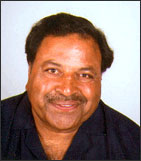
For more coaching information, visit www.coachshiv.com
| January | February | March |
|
April | May | June |
|  |
|||||
| July | August | September | October | November | December | |
![]()
INTRODUCTION
Sometime around 1994/1995, a new skill of Sweep Hit was introduced to the world of hockey. I don't know exactly which coach, player or country invented it, but we all know that the Sweep Hit has taken the world of hockey by storm.
The Sweep Hit has transformed the way the game is played, especially by the wing half-backs (right-half, left-half) and the deep defenders (right back, left back, center back, sweeper back). This technique has overtaken the traditional way of hitting the ball, especially in game situations involving long range passing, crossing or scoring goals.
We have discarded a basic and an effective skill (Hit) with a variation (Sweep Hit) for use in passing, crossing and scoring. In a way this is a shame, as the skill of basic hitting has lot to offer to the game.
The Australian men's team is one top-ranking team that understands the true value of the Traditional Hit, and uses it optimally and frequently in match situations to dominate and eventually win games.
Let's compare and contrast Sweep Hit versus the Traditional Hit, using photographs of match scenarios to illustrate key points.
| SWEEP HIT |
1.1 Advantages of the Sweep Hit
When executing a sweep hit, there is minimal to none chance for the ball to be raised. In fact, the ball travels smoothly along the surface of the field.
A Sweep Hit needs less strength and power to execute, when compared to a traditional hit. Players don't have to be phyiscally strong in order to use the Sweep Hit.
A Sweep Hit can be used in multiple game situations:
1.2 Disadvantages of the Sweep Hit
The Sweep Hit cannot be executed on the run, or from the wrong foot (right foot forward).
The player has to be more or less in a static position, and bent low, while executing this skill. If the player happens to have a split-second advantage, that advantage will be lost in getting into stance for executing the Sweep Hit. This can be a big disadvantage, in a dynamically changing game situation.
An accurate and quick Sweep Hit is not as deceptive as a Traditional Hit can be.
While in the process of Sweep Hitting the ball, if the Sweeper is suddenly put under pressure, the chances of dodging the opponent are next to none. In contrast, a player while in the process of a Traditional Hit, can change his/her mind and dodge the opponent if so required.
1.3 Game Situation
The photograph below is from the 2008 Beijing Olympics semi-final, between Germany and Netherlands. The German left full-back/centre-back is passing the ball with a Sweep Hit to his right full-back/sweeper back, in order to change the focus of the play.
| 2008 Beijing Olympics Semi-final, GER vs. NED |
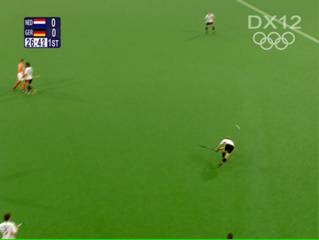 |
| TRADITIONAL HIT |
2.1 Advantages of the Traditional Hit
The Traditional Hit can be taken very quickly, with a short grip and a short back swing. Some present day Australian players execute this quick hit well; so did former Pakistani right full-back Manzoor Sr. during the late 1970s.
The Traditional Hit can be executed on the run, either at a semi full-speed or moderate speed. Please refer to the sequence of photographs below for an example of an on-the-run hit.
The Traditional Hit can be executed in a deceptive manner - i.e., looking right but hitting left, and vice versa
The Traditional Hit can be executed on either foot - right or left - with no loss in power, speed, accuracy and deception.
One can slice or curl the ball while executing the Traditional Hit - as is done in football and tennis.
The Traditional Hit can also be used as an intimidating tool. When it is being executed, opponents tend to keep a safe dsitance, giving space and time to the hitter.
The Traditional Hit has more range and flexibility, and can cover more angles and parts of the field than a Sweep Hit.
2.2 Disadvantages of the Traditional Hit
It is not an easy skill to learn and execute correctly.
Incorrect execution of the Traditional Hit tends to raise the ball dangerously - this basically translates into a turnover.
2.3 Game Situation
The photographs below are from the 2008 Beijing Olympics semi-final, between Australia and Spain. The Australian right-winger is executing a Traditional Hit on the run. The quickness of the hit caught the Spanish defenders out of position, and allowed the Australian centre-forward Abbot to deflect the ball into the goal.
All this happened within the first 40 seconds of the start of the semifinal match - giving a pleasant surprise to the Australian coach Barry Dancer, and of course shocking the Spanish team with the abruptness with which all this happened.
The photographs below demonstrate two strengths of the Traditional Hit - ability to execute it quickly, and while on the run - both of which are not possible with the Sweep Hit.
| 2008 Beijing Olympics Semi-final, Australia vs. Spain | ||
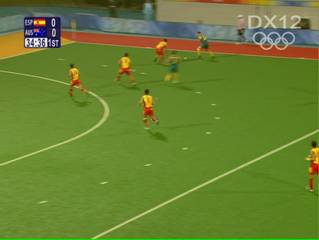 |
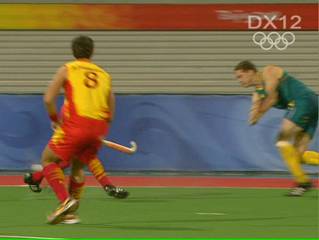 |
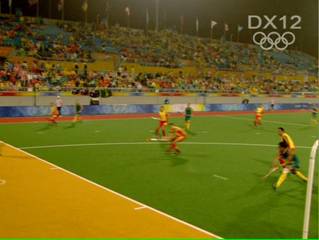 |
| CONCLUSION |
The objective of this article was to develop awareness and highlight the advantages of the Traditional Hit, which is sometimes given a stepmotherly treatment by coaches.
While the Sweep Hit has also established itself very well, and has its worth in certain game situation, we should not ignore the value that the Traditional Hit brings to the game.
Should we teach our youngsters both the Traditional Hit and the Sweep Hit? Yes, of course, so that the young athletes have a wide range of skills to play the game effectively. Balance between the two forms of Hits, and knowing when to use each, is the key.
Finally, I leave you with a conversation I had with the former Australian and Dutch national coach, Terry Walsh, in 2005. As we know, Terry coached the Netherlands men's hockey team to a silver medal in the 2004 Athens Olympic Games.
According to Terry, "We invited Ties Kruize, the legendry Dutch penalty corner specialist of the 1970s and 1980s, to demonstrate the correct technique of hitting the ball to the 2004 Dutch hockey Olympians."
It goes to show that when it comes to learning (or re-learning) the correct technique of a Traditional Hit, it is never too late to learn!
![]()